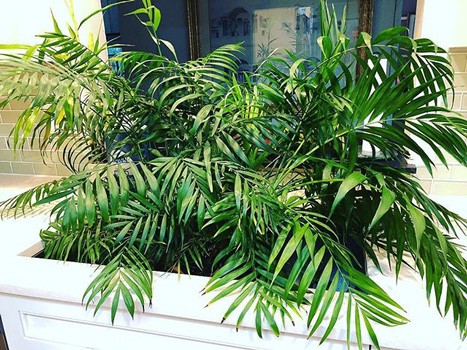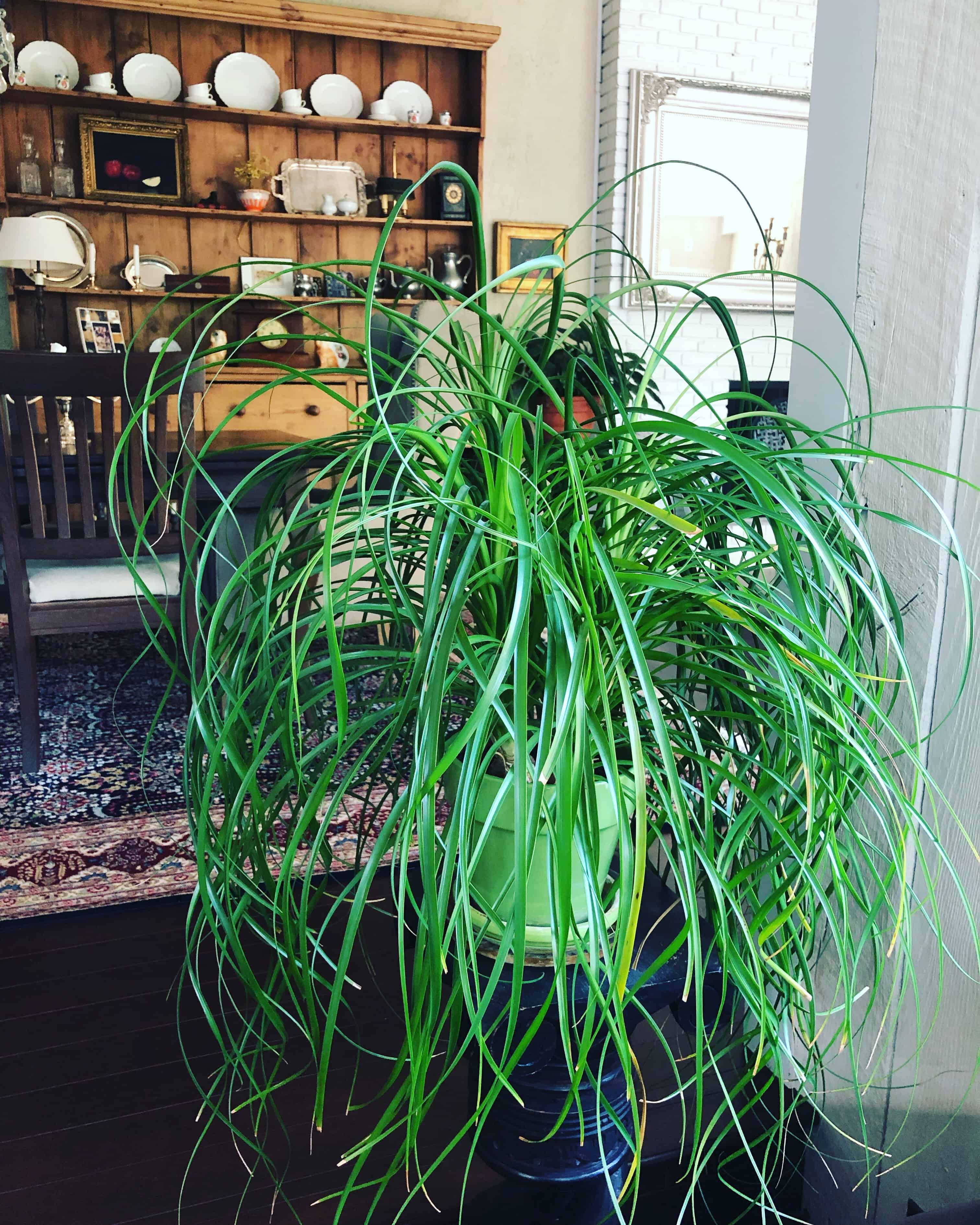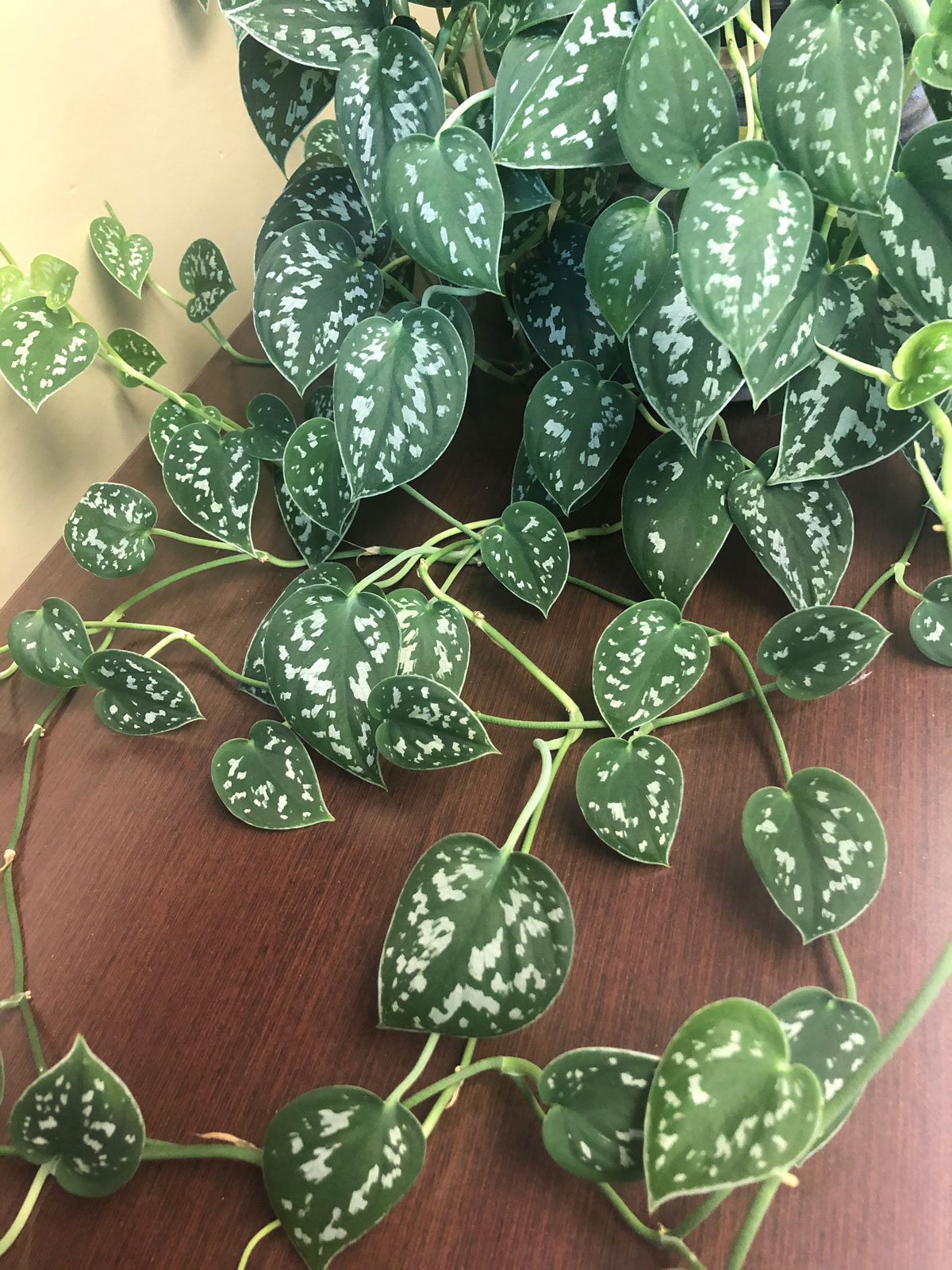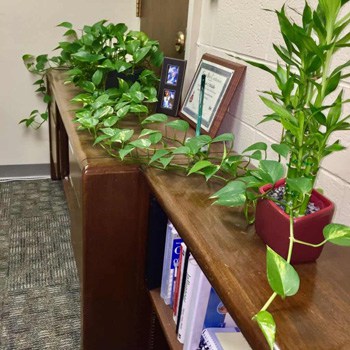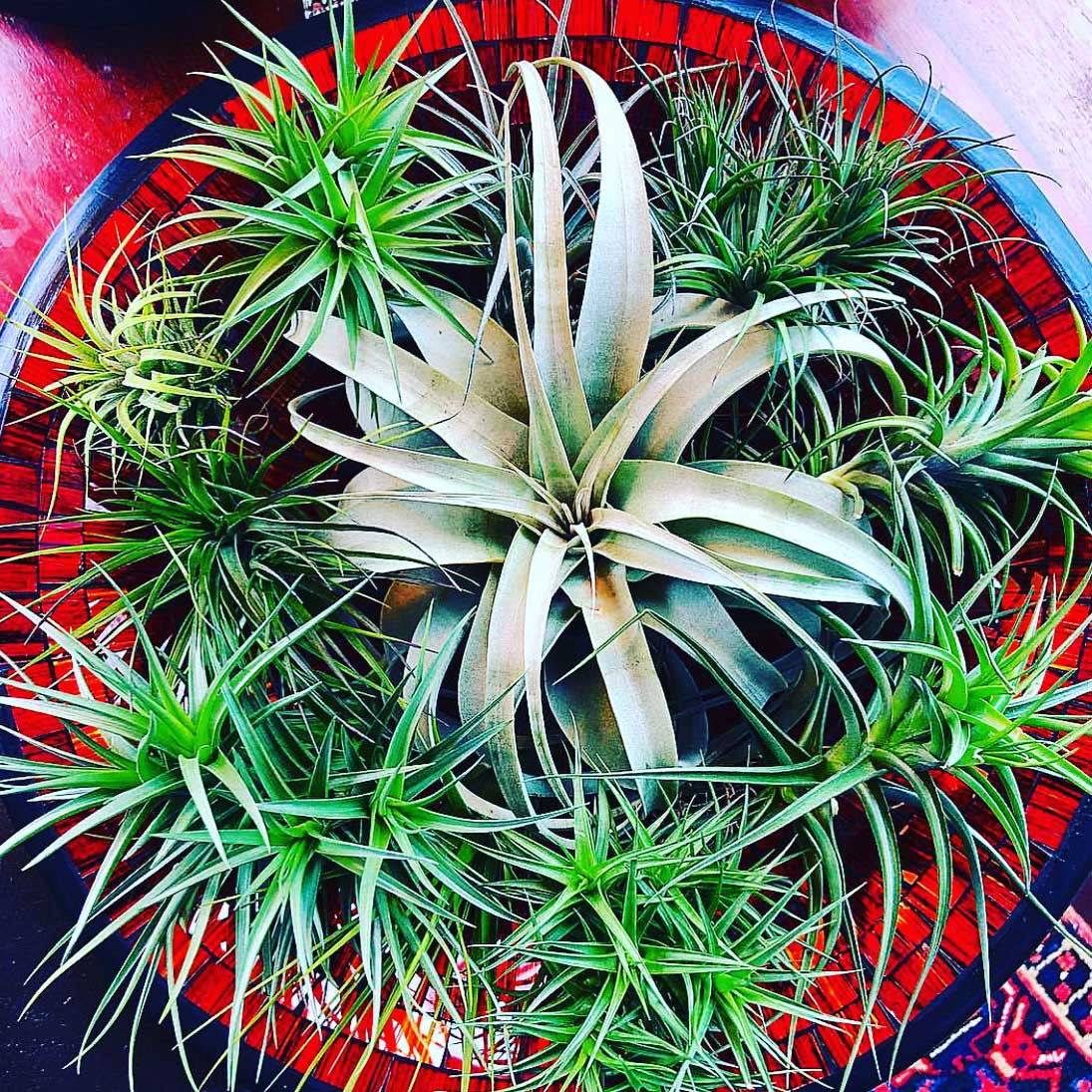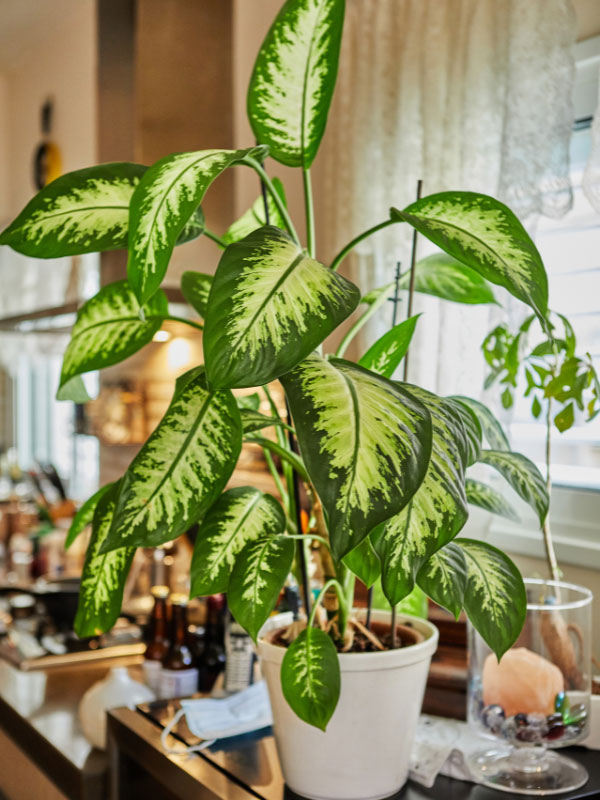Some of the links in this post may be affiliate links.
Are you frustrated with your parlor palm brown tips? Brown leaf tips on your parlor palm, sometimes spelled parlour palm, is a common occurrence. While we can’t expect our plants to be perfect, it helps to know what the causes of brown tips are so we can help minimize them.
Keep reading to learn 7 different causes of parlor palm brown tips, along with solutions.
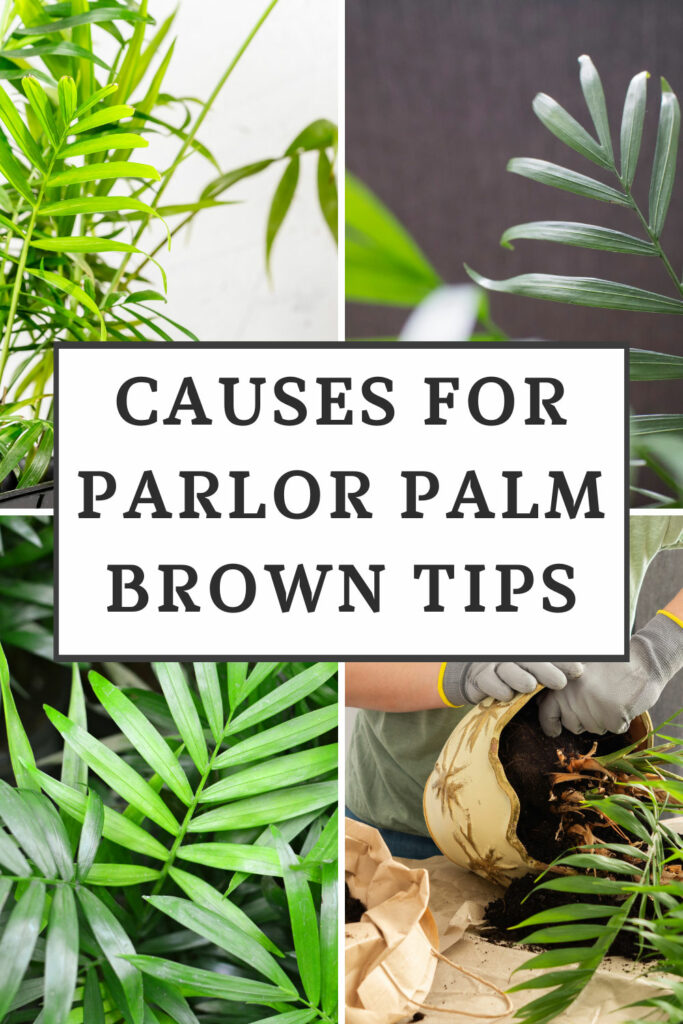
Although some people call them Neanthe bella palms, the accepted scientific name for the parlor palm plant is Chamaedorea elegans. This species is native to Mexico and Honduras.
The parlor palm is one of the most well-adapted of the indoor palms. They make wonderful indoor plants, stay a manageable size, and are one of the best low light plants that you can grow.
Indoors, it is a relatively slow grower and you can expect a mature plant to typically stay under 3 feet tall.
Table of Contents
7 CAUSES FOR PARLOR PALM BROWN TIPS
While brown tips can be caused by a number of things, here are 7 of the most common reasons. At the end of this post, I will give some guidelines on caring for your parlor palm.
1. UNDERWATERING
Dry soil is one way to cause brown tips in your plant. There are two different ways that most people “underwater” their plants.
The first is by allowing the potting mix to go completely dry either from neglect or resulting from the fear of “overwatering“. The truth is that your parlor palm loves a relatively moist soil.
The second way that many people “underwater” is by not thoroughly soaking the potting mix. Too many people are scared of adding too much water when watering their plants that they end up accomplishing the opposite: dehydrating their palm and inadvertently causing brown leaf tips, or even prematurely causing entire palm fronds to dry up and brown.
The proper way to water is to add enough water to thoroughly soak your potting mix and allow the excess water to escape through the drainage holes. Don’t measure out how much water you add. Your goal is to soak all of the roots and potting mix.
If you don’t thoroughly soak your potting mix, you’ll be leaving dry pockets of soil and the roots in those locations will suffer. Dying roots will lead to brown leaf tips and much worse.
After you’ve watered, wait until the top inch or so of the potting mix has dried out, and water again.
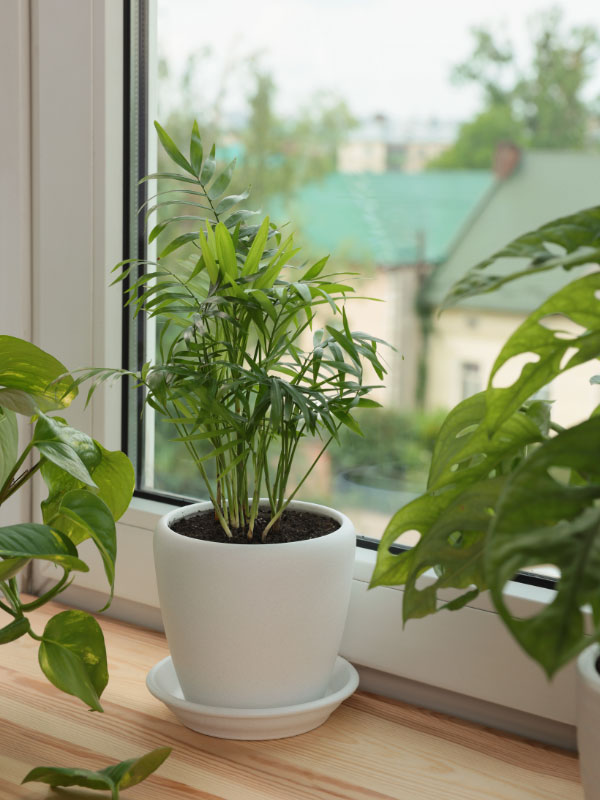
Note that persistent dry soil will also cause yellow leaves, but there are many other causes for yellowing leaves.
2. ROOT ROT
Another cause of brown tips in your parlor palm is root rot. Palms require excellent drainage and will not tolerate soggy soil. Never allow your palm to sit in water for extended periods of time.
Always be aware of any standing water in the saucer below your plant or in its cachepot, and always use pots with drainage holes.
3. FERTILIZER BURN
Fertilizer burn can also cause brown leaf tips. There are three things to be aware of concerning fertilizer burn. It’s normally caused by:
Not measuring the fertilizer
Whether you are using a slow-release fertilizer like Osmocote, or my favorite liquid fertilizer like Dyna-Gro Grow, it’s always vital to measure the amounts according to the label.
Don’t eye ball the amounts! While adding less than recommended is perfectly fine, adding too much can be detrimental.
If you are using a liquid fertilizer, it is also important to measure out the amount of water as well in order to provide the proper dilution. So don’t estimate. Measure.
To measure my water, I use either a plastic gallon jug or gallon watering can. To measure my Dyna-Gro Grow I have a dedicated pair of kitchen measuring spoons that I use for my liquid fertilizer.
Fertilizing more than the recommended frequency
Pay attention to the frequency of fertilization that your fertilizer label recommends. As a general rule of thumb, don’t fertilizer anymore frequently than your label indicates for each given dilution.
Not flushing soil periodically
Fertilizer salts, as well as minerals from tap water, will slowly build up over time in your potting mix. If you’ve had a plant for many years and have been using tap water and have been fertilizing, you may have noticed hard, crusty, white or yellowish build-up on the surface of your soil or around the perimeter of your pot.
If you have your plant growing in a terra cotta pot, they will also absorb fertilizer salts and minerals from tap water and will be very visible on the pot itself.
This build-up can cause brown tips in your parlor palm. In order to avoid this, every so often, water your palm with plain water with no fertilizer.
This will help leach out any excess minerals and fertilizer salts, and it also means that your pot needs to have a drainage hole in order to accomplish this!
If your plant has been in that same pot for years, it may be a good idea to repot it with fresh potting mix and a new pot.
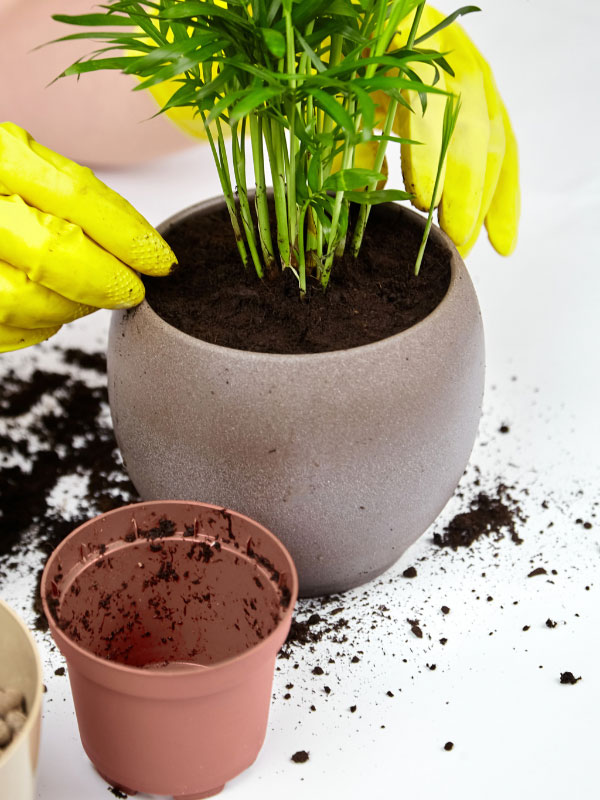
4. MAGNESIUM DEFICIENCY
The University of Florida states that magnesium deficiency is another cause of brown tips on parlor palms. It is considered to be a common deficiency since many fertilizers don’t contain magnesium.
This is just one reason that I love using Dyna-Gro Grow (link to Amazon) as my fertilizer of choice for my houseplants. It contains magnesium, as well as ALL the macro and micronutrients that plants need to thrive. It is also urea-free so it won’t burn your plants.
I use this fertilizer for the majority of my houseplants, and you will see a wonderful difference with regular use!
5. FLUORIDE TOXICITY
The University of Florida also states that fluoride toxicity can cause a dark brown tip necrosis (brown leaf tips). Parlor palms are moderately sensitive to fluoride, and most tap water contains fluoride.
You can avoid most fluoride toxicity through a couple ways. The first is not to use tap water and to use the following types of water instead: distilled, RO water, or other sources of water with no fluoride.
If you don’t want to bother with hauling gallons of distilled water, you can also use a ZeroWater filter to remove fluoride and many other additives and impurities.
The second way to mitigate fluoride toxicity is to maintain the pH of the soil between 6.0 and 7.0. Any fluoride that is present in the soil will not be readily absorbed by your plant when the soil is within this pH range.
6. ROOT BOUND
Is your parlor palm root bound? If your plant’s roots are tightly pot bound, it will make it difficult to properly uptake water through its roots, and this can cause brown leaf tips as well.
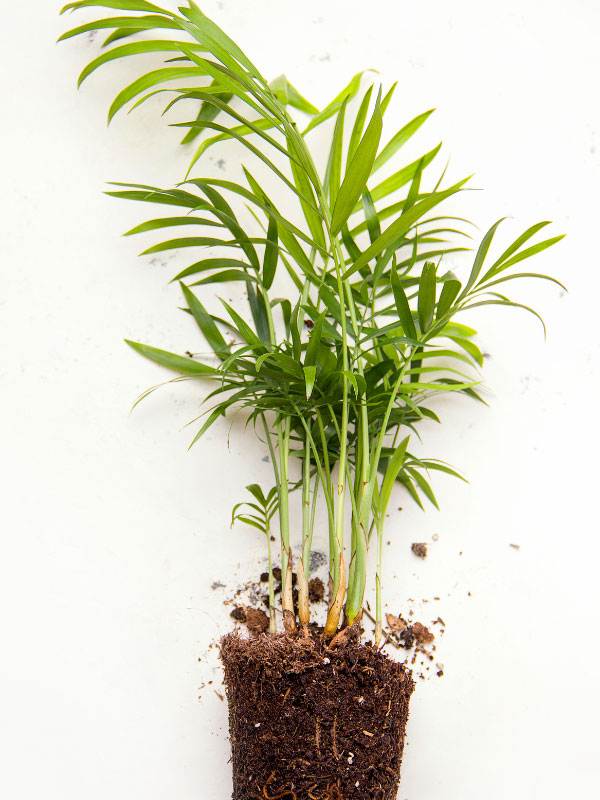
The only way to tell is to take your plant out of its pot. If it is very root bound, go ahead and loosen the root ball, and repot your palm into a new, slightly bigger pot.
For best results, it is best to repot your plant at the start of the growing season when new growth is just starting, although you can do it at any time of year if needed. Just make sure that your plant is getting enough light.
7. LOW HUMIDITY
Dry air is not your palm’s friend and this too can lead to brown leaves and tips.
Warm, dry air also makes your palm susceptible to spider mites. Use a good humidifier if needed to increase your humidity levels, particularly in the winter months if you are using forced air heat in your home.
If you have a very small plant, you can place your palm on top of a humidity tray.
High humidity will help keep your foliage healthier and also help your skin feel better as well. Aim for a comfortable 40-60% range of relative humidity if you can.
Although misting does NOT increase humidity, it can help deter spider mites, so mist away.
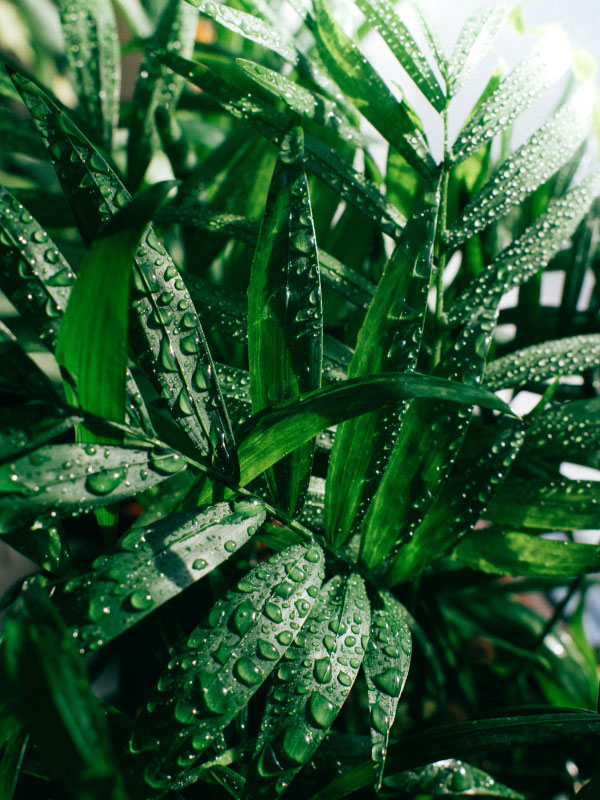
WHAT SHOULD YOU DO WITH THE BROWN LEAF TIPS ON YOUR PALM?
Simply trim them off. Take a pair of scissors and trim the brown leaf tips off. Leave a very narrow margin of the brown area and avoid cutting into the green part of the palm frond.
CARE TIPS FOR A HEALTHY PARLOR PALM
Other than the tips provided above, here are some other tips to help keep your Parlor Palm healthy:
LIGHT
Parlor palm is a great low-light plant, but it will do better if you don’t place it in a dark corner of your room. They make for great office plants and do well with just overhead fluorescent lighting as long as it’s on daily.
Windows with no direct sun at all would be a good spot for your plant. Even a handful of hours of sunshine indoors would benefit your plant. An East-facing window would be ideal. West facing windows would be a good choice as well.
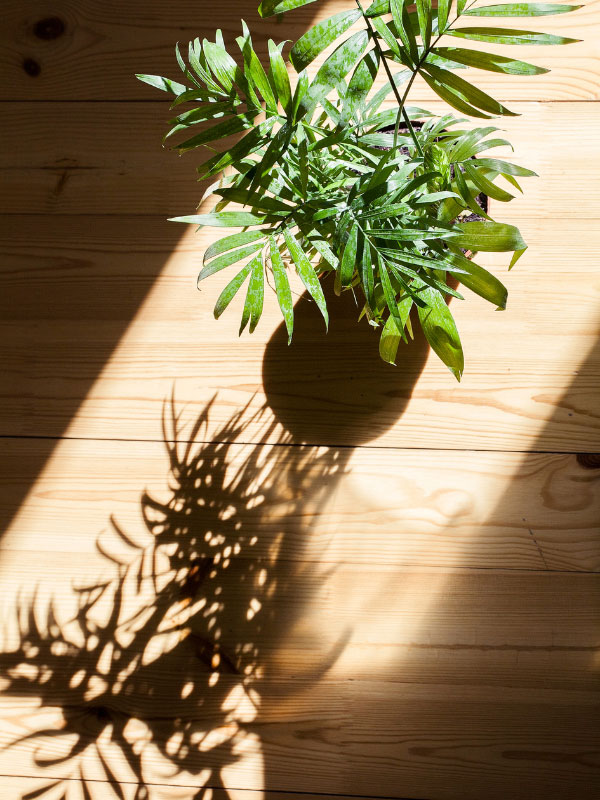
Avoid full day sun indoors. Your plant can take it as long as it’s well watered, but the entire plant will turn a yellowish green in very strong light. Once moved to less direct sun, it will revert to a normal green color.
TEMPERATURE
Avoid any cold drafts or cold temperatures. Average room temperatures are preferred. If you are comfortable, your palm will be too. An ideal temperature range to keep your plant in is 60-85F.
At the same time, avoid placing your palm where they would get direct exposure to air from a heating vent. This can quickly burn the palm fronds. Not just the tips, but the entire fronds.
SOIL MOISTURE & POTS
Palms do not tolerate poor drainage, so always use pots with drainage holes. They also have relatively shallow roots, so try and avoid deep pots.
Avoid letting your potting mix going completely dry as this can quickly spell death for your palm.
For more tips on the care of this plant, check out my Parlor Palm care post.

